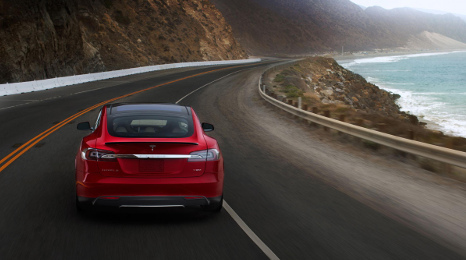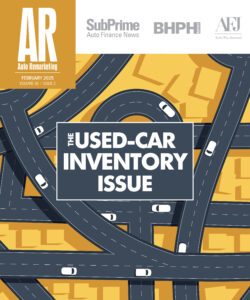Will Tesla’s New CPO Program Bring More Buyers?

Tesla Model S
Tesla’s new certified pre-owned program will definitely serve to make the Model S accessible to more shoppers, but one question remains. Will the certified move bring the automaker more buyers?
The first of the Model S vehicles sold are nearing three-years old, and with Tesla’s recently launched consumer lease program as well as the option given to Tesla Model S owners the option to return the car after three years and recover 45 to 50 percent of its sticker price, Tesla is soon going to have a lot of used vehicles on their hands to sell.
Steven Szakaly, chief economist at NADA, says the issue might be where these potential CPO buyers are going to come from.
“You are going to have used cars; you’re going to have to bring these off-lease vehicles, and you are going to have to sell them. And as a small market producer, my concern would be making sure that I’m bringing in net new customers, and I’m not actually stealing from my new-vehicle sales,” said Szakaly.
He contends there may be people that look at the new Model S and say, “I can get a 2- to 3-year-old Tesla for half the cost. Why am I going to look at a new one?”
“That happens in any market, of course, but the question is will Tesla get a sufficient number of new people entering the market and looking at it at this price point, or are they going to end up shifting demand from their new-vehicle sales,” Szakaly said.
Though we don’t know the answer yet, the outcome will depend in part on how the CPO program is marketed, as well as end-user demand.
There is also the question of whether the promised Tesla Model 3 — which will retail for as little as $35,000 and is set to be released in 2017 — will put a damper on CPO sales for customers looking to go cheaper and new.
Jack Nerad, executive editorial director and executive market analyst for Kelley Blue Book’s KBB.com, said it really depends on the customer.
“Presumably, some will want the larger size of the Model S, while some might want the newer tech of the upcoming model,” he said.
Edmunds.com senior analyst Ivan Drury echoed that sentiment, while also pointing out the two vehicles will most likely just be “totally different animals,” unlikely to draw the same crowd.
“And we don’t know any of the driving dynamics of this cheaper model. One of the main arguments for the Model S is you can get this impressive performance package … we don’t know if the 35,000 to 40,000 Tesla is going to be on the same performance standard,” Drury explained. “I can’t imagine it taking many of the customers who would have initially gone for a Model S. It's just a different animal.”
Drury went on to point out one of the only instances a CPO Model S buyer would be swayed toward the cheaper new model is “if the customer just wants to go easy and wants a long range EV and doesn’t care so much about the performance aspects of the vehicle.”
Lowering the Price Point
Though the program has the potential to steal a few of Tesla's new-car customers, the lowered price point of the certified Model S may serve to draw in more aspiring Tesla owners.
“Having a CPO program, indeed, should expand the Tesla Model S to a wider audience, presumably by offering used Tesla models to buyers who are unable to obtain one new,” said Michelle Krebs, director of automotive relations at Cox Automotive and senior analyst at AutoTrader.com.
And ideally, with more buyers comes more loyal customers and, in turn, can help to ramp up brand loyalty.
Sandy Rubenstein, chief executive officer of branding and marketing company DXagency, says this type of move is very beneficial from a marketing perspective while also giving new-car customers the chance to exchange their “old” ride for the newest model.
“The more opportunities you give consumers to get inside your vehicles the greater the possibility they become brand loyal. For the original purchaser it is a brilliant opportunity to have them come back and engage with the new-year model with a lower depreciation on their original vehicle,” Rubenstein said. “Additionally, by providing a lower cost of entry through a CPO program, it will encourage consumers who buy ‘aspirationally’ to choose Tesla over its competitors.”
Rubenstein also contends that “more good-looking vehicles on the road” for Tesla will lead to more exposure and greater demand.
“Providing the CPO program only increases the brand awareness and accessibility to a larger number of consumers,” she said.
The Two Barriers
But there is another barrier beyond price point that contributes to Tesla’s niche status: electric vehicle adoption.
“With Tesla it is such a niche kind of buyer right now only because you’ve got two things going against them. You’ve got price, which is the biggest barrier, and then you have EV adoption,” said Edmunds’ Drury. “The price point is the biggest one, of course, having someone who can afford a $100,000 car, and the next thing is having a place to charge it.”
That said, as far as EV adoption goes, mainstream and luxury automakers alike are launching electric vehicles right and left, with charging stations being installed all over the country. Charge stations will likely continue to become more available, making EVs more accessible to shoppers.
As for the last barrier — price point — Drury expects the CPO move will take care of that one.
“I think at the used price point, with residuals expected to be around 50 percent, that will definitely break down the barrier of price. And it will then be able to be consumers by your more mainstream consumer. In that sense, it is a good move,” Drury said. “And it is a confidence inspiring move from a customer’s point of view, because of the warranty and you also have someone who went through the certification process, rather than buying it from a private party.”
Fulfilling An Automaker’s Need
Though the industry will have to wait and see how the certified program rollout will flow, analysts aren’t surprised at Tesla’s latest move.
In fact, CPO programs don’t just serve to grow a customer base, they also are tools for automakers to retain healthy residual values for their units.
“All manufacturers have to deal with the implications of having used vehicles in the marketplace with their brands on them,” said KBB’s Nerad. “These implications are broad, and include, importantly, residual value, a key in the lease rates of new vehicles … It is simply another aspect of being a 'grown-up' auto manufacturer.”
Tesla is following the lead of other automakers in establishing a CPO program to help protect its residual values and widen accessibility, says Krebs, but she also points out there is one more element unique to Tesla that makes a CPO program even more beneficial.
“In Tesla’s case, CPOs represent a new revenue/profit stream that Tesla needs, as it strives to turn a profit. Because Tesla stores are factory owned, Tesla takes in the revenue and earns the profits from CPO cars, in contrast to other manufacturers whose dealers make the revenue and profits on CPO cars,” Krebs explained. “Tesla already is a very prominent automaker. Establishing a CPO program is a must to be a player, especially luxury player, in the wider automotive business.”
Tesla continues to reinvent the way the auto industry engages with consumers, and with this latest move into the used industry, the automaker has the potential to impact some of its competitors.
“Automakers are going to be hit hard in their wallets. Tesla’s move into the CPO market will start to infringe on new and used auto sales in the $40,000 $60,000 range and take a bite out of their consumer base,” Rubenstein predicts.
This is the second installation of a three-part series highlighting Tesla’s new CPO program. Stayed tuned to Auto Remarketing Today for further stories focused on legal concerns, market expansion, impact on Tesla’s new-vehicle sales, as well as what Tesla might be able to charge for its CPO models. The first installation focused on sourcing Tesla’s CPO program.

 View The Latest Edition
View The Latest Edition

